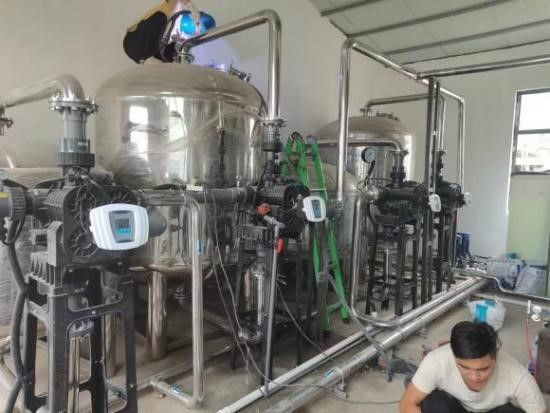

Products

Description:
Seawater cannot be used directly due to its very high salt content, high salt content, high hardness, high corrosiveness to equipment, and large seasonal changes in water temperature, making the reverse osmosis desalination system much more complex than the conventional brackish water desalination system, and the engineering investment and energy consumption are also much higher. Therefore, it is particularly important to reduce engineering investment and energy consumption through careful process design and reasonable equipment configuration, so as to reduce the unit water production cost and ensure the stable operation of the system.
Whether it is seawater desalination or brackish water desalination, feed water pretreatment is the key to ensure the long-term stable operation of the reverse osmosis system. When developing a seawater pretreatment plan, it should be fully taken into account that there are a large number of microorganisms, bacteria and algae in the seawater. The growth of bacteria and algae and microorganisms in seawater will not only bring many troubles to water intake facilities, but also directly affect the normal operation of seawater desalination equipment and process pipelines. Periodic high tide and low tide, a large amount of sediment is entrained in seawater, and the turbidity changes greatly, which is easy to cause the unstable operation of seawater pretreatment system. Seawater is highly corrosive, and the materials of the equipment, valves and pipe fittings used in the system should be screened to a certain extent, and the corrosion resistance should be good. Welcome to call us to discuss




